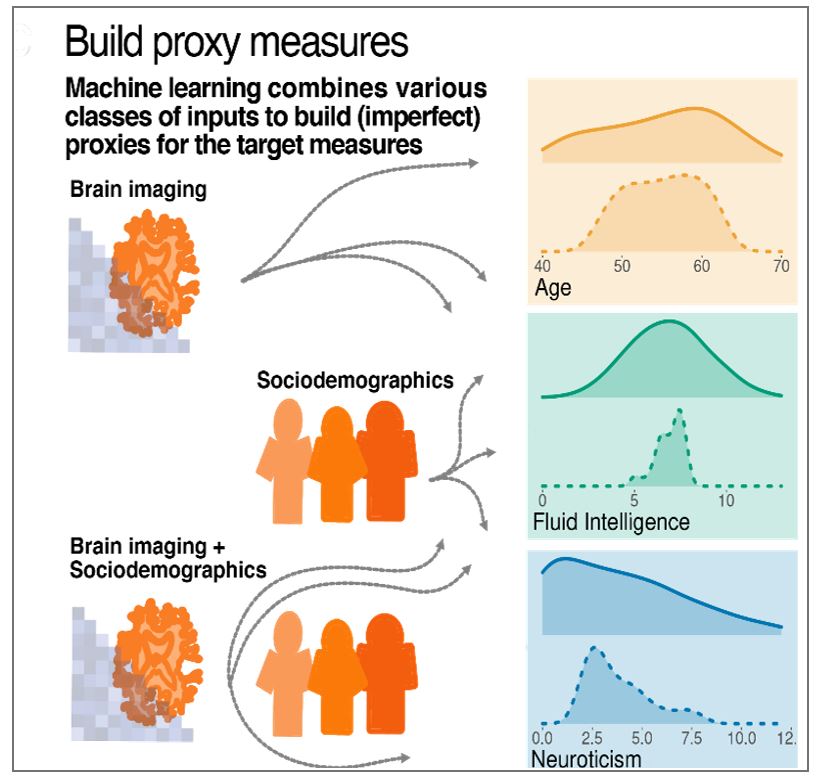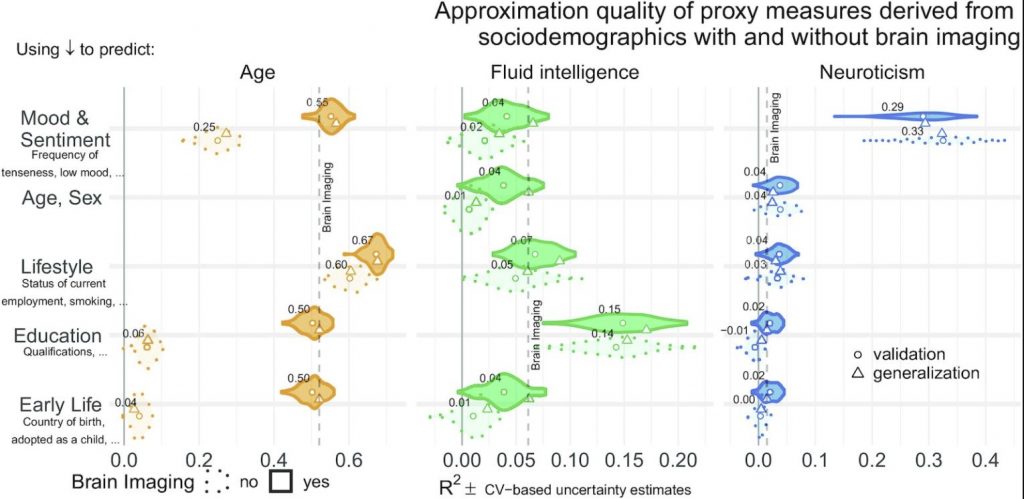AI for mental health assessment: Author Q&A
A new article published today in GigaScience demonstrates that machine learning can yield “proxy measures” for brain-related health issues from large population data, without the need for a specialist’s assessment. To develop AI models sensitive to mental health, Denis Engemann and his team at Inria (Saclay – Île-de-France) combined questionnaires and brain imaging data from the UK Biobank (read the press release here).
Mental health issues have been increasing worldwide, with the WHO determining that there has been a 13% increase in mental health conditions and substance abuse disorders between 2007 and 2017. We interviewed Dr. Engemann via email about his research and the emerging role of machine learning for mental health assessment:
You are using brain signals and questionnaire data to derive measures of mental health, using machine learning. Could you explain in simple terms what the goal of this research is?

Mental health is a construct that is difficult to quantify and relates to human reality at multiple levels of description: It is like a kaleidoscope.
Research on its biological causes focuses on multiple levels such as alterations in neurotransmitter concentrations, large-scale patterns of neuronal activity or brain anatomy.
Yet, when it comes to inferring the mental health status, practitioners rely on overt behavior and speech, potentially revealing individual life-style patterns, but also the social environment. In this research, we want to build richer measures of mental health by benefiting from heterogeneous data describing individuals from categorically different points of view.
Without going into too much technical detail, how does the Machine Learning method derive “proxy measures” of psychological concepts from questionnaire data?
In its essence, we see machine learning as a statistical tool for estimating functions that robustly map outcomes of interest (like results of cognitive tests or self-reported mood) to a broad range of input data; even if the precise data generating mechanisms are unknown.
For instance, we can try to explain classic assessments of mood, based on questionnaires, with brain imaging. Given the brain image of a person, the resulting model will provide a prediction by returning the most probable questionnaire result by extrapolating from people whose brains “looked” similar. Thus, the predicted questionnaire result can become a proxy for the construct measured by the questionnaire. This reflects the statistical link between questionnaire data and brain images and, therefore, can enrich the original questionnaire measure.

Once the model is built, this proxy can be obtained even if the questionnaire of interest has never been assessed. This is a promising method for finding large-scale statistical patterns of health within the general population to then enhance smaller clinical studies in which machine learning may not be directly applicable, due to limited training data.
In the past decade, “brain age”, based on this proxy measure methodology, has led to promising studies in clinical neurology. In this work, we generalized this methodology in two ways:
First, we showed that, beyond biological aging, the same proxy-measure framework is applicable to constructs more directly related to mental health. Second, we showed that useful proxy measures can be derived from other inputs than brain images such as sociodemographic and behavioral data.
What’s in the UK biobank data, and how did it help you for this project?
The United Kingdom Biobank contains the key ingredients to address our research question. It provides an epidemiological dataset encompassing a large volume of heterogeneous biomedical and sociodemographic data sampled from the general population. This dataset reaches a size that is appropriate for a machine learning approach.

Moreover, it contains direct measures of classical psychological constructs in academic and experimental psychology established throughout the 20th century, including fluid intelligence (cognitive capacity) and neuroticism (persistent negative mood and feelings). These constructs are intimately related to mental health and have been intensely studied in psychiatric populations.
In your opinion, what is the most important implication of your work?
Our results open an entirely new set of opportunities for biomarker development and clinical applications by providing evidence for the generality of the proxy measure framework. Previously, we have been actively studying brain age as an empirically derived measure of biological aging. While we intuitively understand “brain age” as a statistical phenomenon, we did not yet conceptualize it in more general terms as a proxy measure.
In the present work, we have revised the framework by proposing a more general terminology and extending the scope successfully through novel empirical benchmarks. We not only found that the proxy could enrich the original target, but multiple proxies of different constructs like aging, intelligence or mood were complementary at characterizing real-world health behavior like exercise, sleeping, or drinking habits.
Assessing psychological constructs, such as intelligence or neuroticism, today usually requires a human expert. Will machine learning be able to “replace” the human expert in the future, at least for certain questions?
Thank you for this fascinating question. One can doubt that this type of approach is going to replace psychologists.
Instead, the psychologist will have a richer toolkit including proxy measures derived from large populations next to classical questionnaires and interviews. If we think about this for a moment, already the classical intelligence quotient, the IQ score, is obtained from referencing the raw results of the intelligence test by comparison against test results obtained in different age cohorts, leading to norm tables.
Our approach generalizes this process and allows mental health researchers and practitioners to consider additional social and biomedical contexts for referencing individual results. Machine learning helps here to consider a much larger and more complete volume of observations.
How could work such as yours change the practice of psychology and related fields?
In the future, psychologists and machine learning models may form a dynamic duo for tackling mental assessments. This may lead to increasingly fine-grained and personalized mental assessments. One can imagine that next to completing tests, questionnaires, and interviews, clients or patients grant a machine learning model secured access to their social media accounts or their mobile phone data to then return proxy measures useful to both the client and the mental health or education expert.
However, what is not going to change is that practicing psychologists and other mental health practitioners will need to carefully interpret and contextualize test results on a case-by-case basis and through social interaction; whether these results will be derived from expert-based questionnaires or machine learning.
Read the GigaScience article:
Dadi K; Varoquaux G; Houenou J; Bzdok D; Thirion B; Engemann D (2021)
Population modeling with machine learning can enhance measures of mental health. GigaScience (October 2021). https//doi.org/10.1093/gigascience/giab071
Media coverage:
L’Express (in French): Une intelligence artificielle pour évaluer la santé mentale des patients, by Victor Garcia
All GigaScience content (including articles, blogs, and peer reviews) is open access and issued under a Commons Attribution License (CC-BY 4.0), which permits unrestricted reuse, distribution, and reproduction in any medium, provided the original work is properly cited.